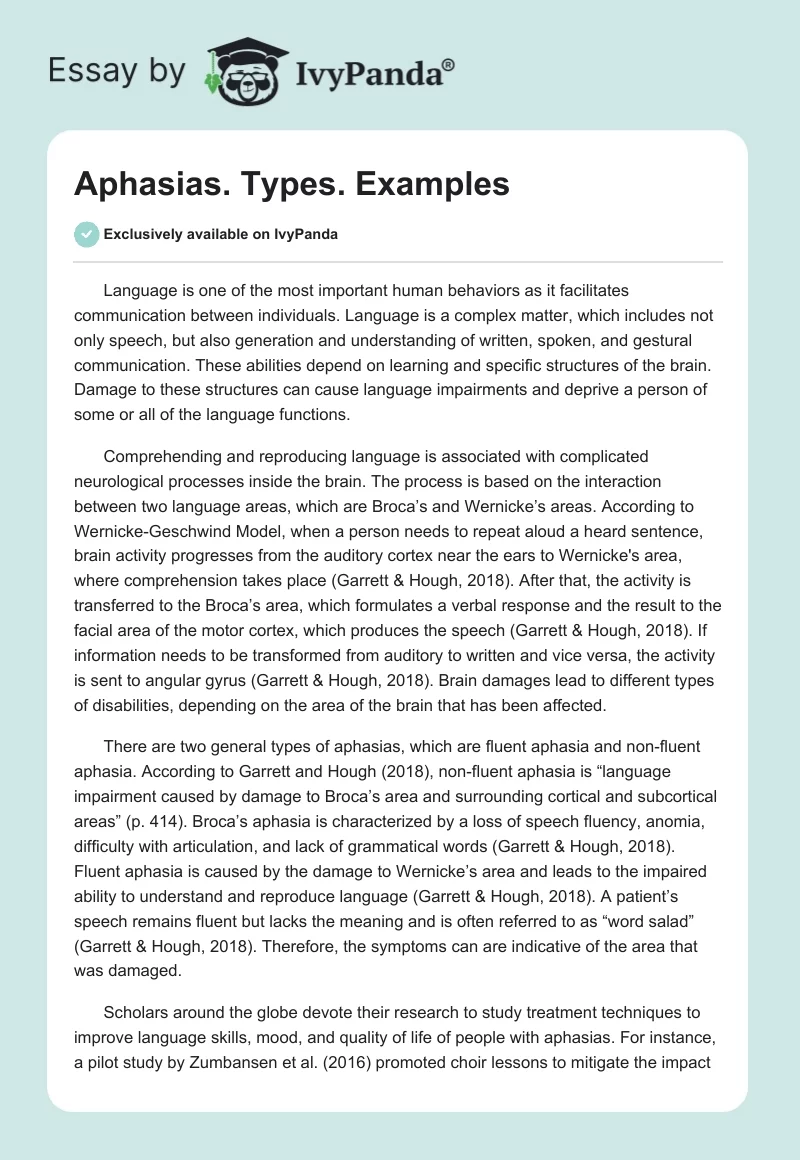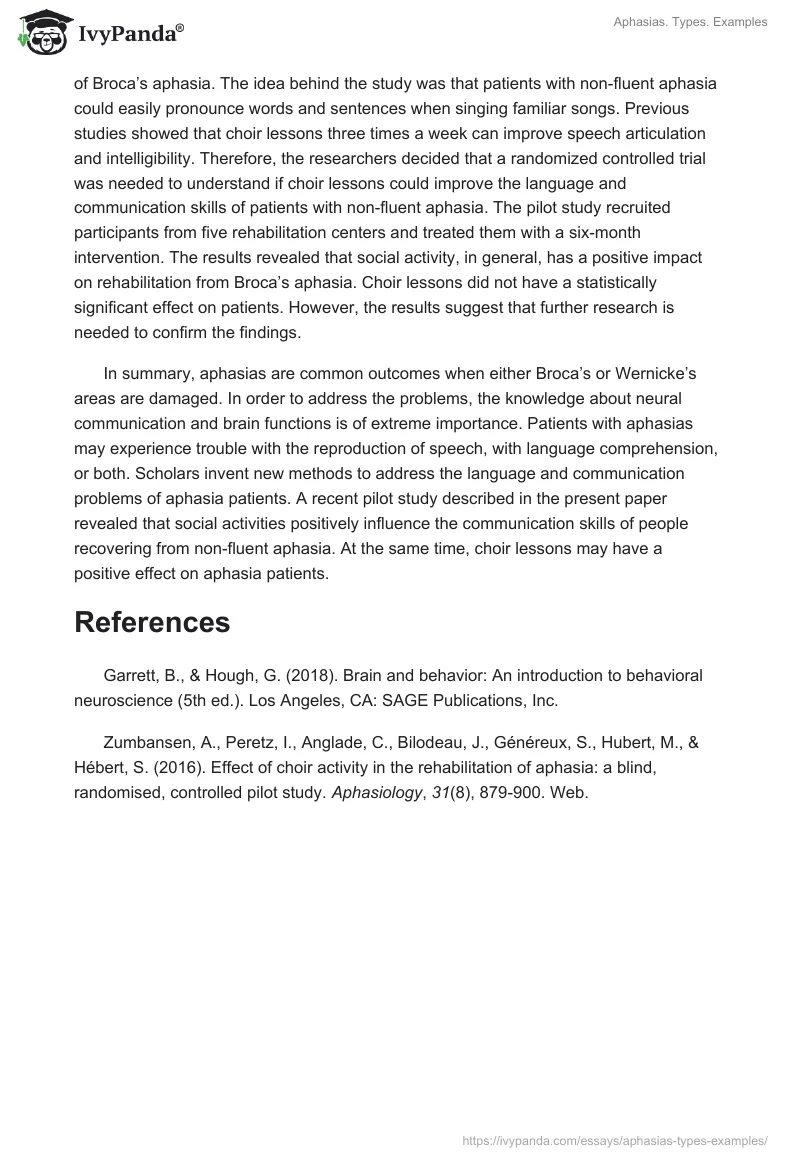Language is one of the most important human behaviors as it facilitates communication between individuals. Language is a complex matter, which includes not only speech, but also generation and understanding of written, spoken, and gestural communication. These abilities depend on learning and specific structures of the brain. Damage to these structures can cause language impairments and deprive a person of some or all of the language functions.
Comprehending and reproducing language is associated with complicated neurological processes inside the brain. The process is based on the interaction between two language areas, which are Broca’s and Wernicke’s areas. According to Wernicke-Geschwind Model, when a person needs to repeat aloud a heard sentence, brain activity progresses from the auditory cortex near the ears to Wernicke’s area, where comprehension takes place (Garrett & Hough, 2018). After that, the activity is transferred to the Broca’s area, which formulates a verbal response and the result to the facial area of the motor cortex, which produces the speech (Garrett & Hough, 2018). If information needs to be transformed from auditory to written and vice versa, the activity is sent to angular gyrus (Garrett & Hough, 2018). Brain damages lead to different types of disabilities, depending on the area of the brain that has been affected.
There are two general types of aphasias, which are fluent aphasia and non-fluent aphasia. According to Garrett and Hough (2018), non-fluent aphasia is “language impairment caused by damage to Broca’s area and surrounding cortical and subcortical areas” (p. 414). Broca’s aphasia is characterized by a loss of speech fluency, anomia, difficulty with articulation, and lack of grammatical words (Garrett & Hough, 2018). Fluent aphasia is caused by the damage to Wernicke’s area and leads to the impaired ability to understand and reproduce language (Garrett & Hough, 2018). A patient’s speech remains fluent but lacks the meaning and is often referred to as “word salad” (Garrett & Hough, 2018). Therefore, the symptoms can are indicative of the area that was damaged.
Scholars around the globe devote their research to study treatment techniques to improve language skills, mood, and quality of life of people with aphasias. For instance, a pilot study by Zumbansen et al. (2016) promoted choir lessons to mitigate the impact of Broca’s aphasia. The idea behind the study was that patients with non-fluent aphasia could easily pronounce words and sentences when singing familiar songs. Previous studies showed that choir lessons three times a week can improve speech articulation and intelligibility. Therefore, the researchers decided that a randomized controlled trial was needed to understand if choir lessons could improve the language and communication skills of patients with non-fluent aphasia. The pilot study recruited participants from five rehabilitation centers and treated them with a six-month intervention. The results revealed that social activity, in general, has a positive impact on rehabilitation from Broca’s aphasia. Choir lessons did not have a statistically significant effect on patients. However, the results suggest that further research is needed to confirm the findings.
In summary, aphasias are common outcomes when either Broca’s or Wernicke’s areas are damaged. In order to address the problems, the knowledge about neural communication and brain functions is of extreme importance. Patients with aphasias may experience trouble with the reproduction of speech, with language comprehension, or both. Scholars invent new methods to address the language and communication problems of aphasia patients. A recent pilot study described in the present paper revealed that social activities positively influence the communication skills of people recovering from non-fluent aphasia. At the same time, choir lessons may have a positive effect on aphasia patients.
References
Garrett, B., & Hough, G. (2018). Brain and behavior: An introduction to behavioral neuroscience (5th ed.). Los Angeles, CA: SAGE Publications, Inc.
Zumbansen, A., Peretz, I., Anglade, C., Bilodeau, J., Généreux, S., Hubert, M., & Hébert, S. (2016). Effect of choir activity in the rehabilitation of aphasia: a blind, randomised, controlled pilot study. Aphasiology, 31(8), 879-900. Web.


